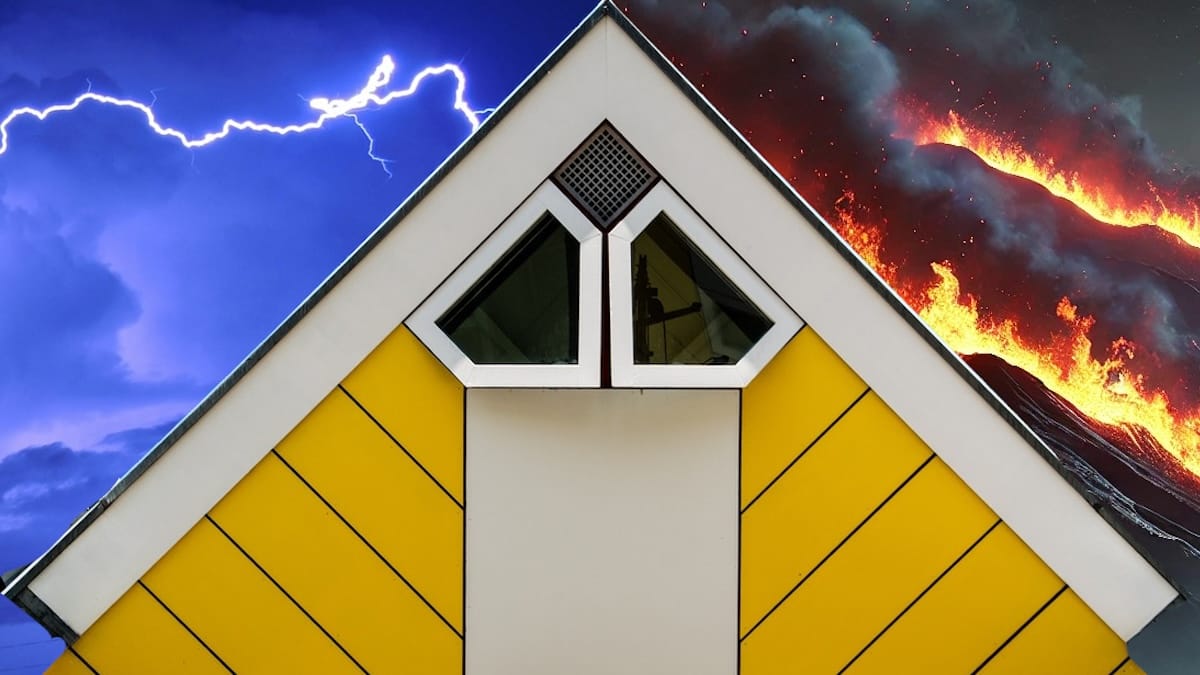
Weather whiplash: How the future will have to design for resilience
Climate change isn't headed for an extreme. It's headed for every extreme.
The world is watching the terrible wildfires blazing around Los Angeles. Social media offered apocalyptic sights: the LA skyline under a red sun hazed in black smoke, fire sweeping over the hills near the Hollywood sign, roads jammed with abandoned cars, charred ashes that used to be some of the world's most expensive real estate. These fires are already among the worst in California's history, and they're not even contained yet, let alone extinguished.
Thousands of people have lost their homes, including the rich and the famous. But they, at least, can afford to rebuild. Working-class evacuees are facing a worse plight. Many fled with only the clothes on their backs, and now they have nothing to come back to. Some were dropped by their insurance companies just weeks before the fires. In the best case, they'll be displaced for months or years. In the worst case, those who were already struggling will wind up destitute and homeless.
These fires are a testament to the menace of climate change. They're the predictable result of an extremely dry winter, amplified by hurricane-force Santa Ana winds that whipped embers for miles.
But as recently as 2023, California suffered massive floods, caused by record-breaking rainfall from atmospheric rivers. These storms washed out roads and bridges, toppled trees and power lines, spawned tornadoes and mudslides. They buried mountain towns in snow so deep they were cut off from civilization for days.
Meteorologists have a name for this sudden shift. They call it "weather whiplash."
A new kind of chaos
Weather whiplash is becoming increasingly common, and not just in California. Although global temperatures are climbing a smooth curve, weather patterns won't change in a predictable manner. Instead, climate change is bringing more chaotic weather. It swings from one extreme to the other—broiling to freezing, flood to drought, heat dome to cold snap—more frequently and more violently.
Climate scientist Daniel Swain notes that "hydroclimate whiplash"—a subcategory that describes California's recent past, alternating between very wet and very dry conditions—has increased by up to 66 percent since the mid-20th century and is projected to worsen with further global warming.
Since we're well past the point of preventing climate change, our only choice is to adapt. Until now, human beings have acted as if nature was beneath our notice. We've heedlessly built houses on floodplains, at the edge of crumbling coasts, or at urban-rural interfaces among ecosystems like chaparral that are evolved for fire. We've built them from cheap materials, like untreated wood that burns and plastic that melts, with no thought for insulation or energy efficiency. We've tried to entomb rivers in concrete, as if we knew best where and how much they should flow.
Climate change is exposing all of this for the folly it is. The more we try to ignore nature, the worse it will be for us. The communities that will survive the upheavals to come are the ones that are designed to be resilient.
The houses of the future will need fireproof construction: like metal roofs, attic vents that exclude embers, pared-down landscaping, and siding materials like stone, brick or fiber cement that won't burn.
The Los Angeles fires offered dramatic evidence for this approach. On several streets, passive houses built to a high standard of efficiency and fire safety survived unscathed, while every other house on the block burned down. Such houses reduce the need for heat in the winter and air conditioning in the summer because they are airtight, with strong exterior insulation and triple-pane windows. The roof is metal, and they do not have eaves or attic vents, so sparks in a wildfire can't get inside. The yard is free of plants and surrounded by concrete walls.
But weather whiplash makes the task more difficult because it's not enough to protect against fire. We also need to think about flood-proofing our communities.
This is harder to address at the individual level, but here too, smart design offers a spread of solutions. Cities can build rain gardens and parks designed to flood, soaking up storm water and gradually discharging it. Porous pavements can replace impermeable hard surfaces which channel all rain and snowmelt toward people who live downhill.
We need to give our rivers room to rise. Instead of trying to constrain them with a corset of dams and levees—which inevitably fail into disastrous floods when storms are large enough—we can build setback levees so that the overflow can spread out harmlessly. It's a solution so simple and effective, it's hard to believe that it's taken so long to come up with it.
We'll also need megaprojects like Japan's G-CANS or Chicago's Deep Tunnel, massive subterranean reservoirs for floodwater diversion and storage. In extreme cases, whole communities may have to move uphill or inland, staging managed retreats from territory that's impossible to defend from raging rivers or rising seas.
These kinds of solutions won't be easy, and they won't be cheap. However, the cost of inaction is likely to be higher still. In the wilder weather of the future, every nation and every community will have to consider how to protect itself.
